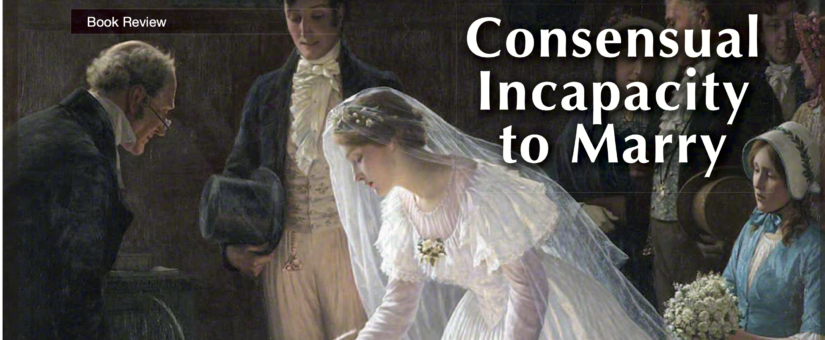
Consensual Incapacity to Marry – Book Review
- Posted by Mary's Advocates
- On March 18, 2022
- 0 Comments
Consenting to Marriage and Having the Capacity to Do What You Consented To
This article originally appeared in “Latin Mass” Magazine, Christmas 2021 (see PDF), and is shared on Mary’s Advocate with permission.
A review of Consensual Incapacity to Marry, a doctoral dissertation by Catherine Godfrey-Howell, St. Augustine’s Press, South Bend, Indiana 2020, $40.00. Forward by Raymond Leo Cardinal Burke.
by Sharelle Temaat
A priest who came to a parish that I had attended for twenty years began right away offering annulment advice to parishioners. I asked him if he knows what divorce/annulment/remarriage does to children. He became angry, saying, “It doesn’t have anything to do with them!” And he ordered me out of the confessional.
Over the past fifty years, canon lawyers in North American tribunals have given great attention to the consensual incapacity to marry. The so-called psychological grounds of nullity have almost totally dominated the decisions of tribunals. The situation is so grave that reasonable people wonder if anyone is truly capable of marrying.
What should be one of the more difficult grounds of nullity to prove with moral certitude has become known as the easiest ground to use to declare tens of thousands of marriages null.
All of this is in response to the increasing numbers of Catholics divorcing after Vatican II. Instead of promoting the Canons urging reconciliation of spouses and families, canon lawyers across the U.S. have promoted their own interpretations of Canon 1095.2 and 1095.3. The canons below are ignored as if they are outdated:
Canon 1153.2 instructs spouses to restore their common conjugal life when the reason for separation ceases.
Canon 1155 says that “the innocent spouse may laudably readmit the other spouse to the conjugal life, in which case he or she renounces the right to separation.”
Canon 1446.2 says that in the early stages of litigation, and indeed at any other time as often as he discerns any hope of a successful outcome, the judge is not to fail to exhort and assist the parties to seek an equitable solution to their controversy in discussions with one another. He is to indicate to them suitable means to this end and avail himself of serious-minded persons to mediate.
Canon 1676 says that “before he accepts a case and whenever there appears to be hope of success, the judge is to use pastoral means to persuade the spouses that, if it is possible, they should perhaps validate their marriage and resume their conjugal life.
Canon 1695 says that “before he accepts the case, and whenever there appears to be hope of success, the judge is to use pastoral means to induce the parties to be reconciled and to resume their conjugal life.
The following two Canons are instead promoted as if they are the only ones worth considering:
Canon 1095 .3 – those who, because of causes of a psychological nature, are unable to assume the essential obligations of marriage.
American, Canadian, and Dutch canonists have not only hijacked what religion texts will be used in Catholic education and what changes will take place in the Mass, but they have more surreptitiously changed what marriage is through the way that diocesan marriage tribunals decide marriage cases.
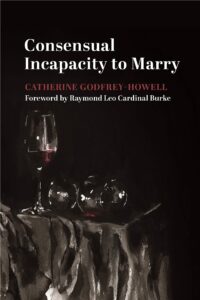
Before Vatican II most tribunal cases considered objective grounds for nullity like prior vows, consanguinity (close blood relationships), impotency, and lack of age (16 for a male, 14 for a female); and Declarations of Nullity numbered around 300 a year. Since Vatican II, tribunals focus instead on psychology, psychiatry, and the interpersonal relationship, using Canon 1095.2 and .3 to declare null most of the tens of thousands of marriage petitions submitted to them every year since the 1970s.
Catherine Godfrey-Howell’s doctoral dissertation on consensual incapacity to marry is the third dissertation on the canon that I know of, and the most thorough. Raymond Cardinal Burke published Lack of Discretion of Judgment Because of Schizophrenia: Doctrine and Recent Rotal Jurisprudence in 1986, and Father Jaimes Ponce published Lack of Internal Freedom on Matrimonial Consent: An Analysis of Rotal Jurisprudence and American Decisions in 2012.
Annulment Is Now Essentially Divorce
On pages 95 and 96, Howell quotes S. Kelleher, one of the few official American consultants during Code revisions, who admits that the “new procedures will actually allow what is, essentially, divorce,” In 1967, during the Canon Law society of America’s Annual Meeting in Denver, Colorado, Kelleher presented “Canon 1014 and American Culture,” basically asking what action a person may try to free himself from the bond of an unhappy marriage. Kelleher explains:
Where were these “experts” when the Pharisees were trying to make Jesus see their point of view?
Right to Partnership
On page 123, Howell relates the newly acknowledged right that Rotal Judge Monsignor Lucien Anné introduces in 1972–the right to partnership, which comes from Guadium et Spes n. 48.
How is “partnership” defined so that tribunals can make a morally certain judgment about the invalidity of a marriage based on the exclusion of partnership? “Anné held that the formal object of consent is the right to the community of life which consists in a whole network of relationships between the parties, some of which are essential and others are merely integrating.” And “It is clear, then, how difficult it is to explain in the existential order and in positive and accurate words just what are the formal elements of this partnership for the whole of life.”
What is clear is that American tribunals issue tens of thousands of Declarations of Nullity that are not correct, which is what Cardinal Raymond L. Burke states on p. xxi of his Forward to Howell’s book, “This book can be very helpful for canonists and others who know or at least sense that the ‘received American jurisprudence,’ still deeply ingrained in the operation of too many tribunals, is not correct.”
If you thought that Uncle LeRoy’s “annulment” sounded flaky, it most likely was.
Marriage As the Church Understands It
On pages 128 and 129, Howell describes what American jurisprudence means by “incapacity for a true Christian marriage” or “marriage as the Church understands it.”
Quoting Germain Lesage’s list of requirements essential to this communion of life, one has to realize that there isn’t anyone who can even define what he is talking about, let alone qualify. This is Lesage’s list of requirements essential to the communion of life:
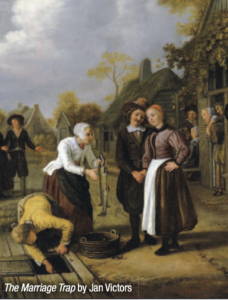
Canonists have used language that is misleading and confusing, sounding so far above the ability of the average man or woman to understand, that many have given up trying to defend their marriages from tribunal judges who seem to have more profound ideas of how family life should be lived than what the poor husband or wife in the pew can possibly comprehend.
However, God is simple. His laws are clear. We all learned them in Catholic high school and college before Vatican II. They are now and always will be in effect. At the end of this book review, I have copied Father Cornelius Lapide’s “Definition of Marriage” from the Sixteenth Century.
Elimination of the Ius in Corpus and the Elimination of Conjugality as Object of Consent
On page 155-158, Howell tells us that jurisprudence has eliminated the exchange of the body for those acts proper for the generation of children, the only right which spouses exchange according to the 1917 Code. “Marriage is not procreation, they argue, nor is a spouse primarily seen as a partner in procreative acts.”
Canon 1081 of the 1917 Code states that the object of consent is the ius in corpus (the right to sexual intercourse), given perpetually and exclusively. According to an article by T. Doyle in Marriage Studies II, Reflections in Canon Law and Theology, 1982, “the promulgation of Guadium et Spes, with its treatment of marriage, began a new phase in the theological and canonical development of the nature of the object of consent.”
Canonists now appeal to personalist perspectives in both theology and philosophy in order to assert that the human person, in marrying, is ultimately acting for self-fulfillment. How this translates into moral certitude regarding the validity or invalidity of marriages becomes as confusing as Snoopy’s futile attempts to overcome the Red Baron by piloting his dog house. The canonical formation and practice of contemporary canonists should be challenged at its roots.
New Definition of Marriage
On page 168, Howell again quotes canonist Germain Lesage who writes that “in post-conciliar jurisprudence canonists have a new definition of marriage, now understood less as generation of children and more as means of happiness and fulfillment of spouses.” This is the thinking that the visiting priest to my parish was apparently referring to in my opening quote above. The children in a marriage have become a footnote while the more spiritual, human, personal fulfillment, happiness, completion, integration, and enrichment is what matters to those clerics who have named themselves the judges of what marriage is in the post-Vatican II age.
If you have wondered how someone married over thirty years with children and grandchildren can suddenly be declared never married by a diocesan tribunal and free to marry again in the Catholic Church, this is the path that allows such second “marriages.” Or third or even fourth.
Psychiatry and Consensual Incapacity to Marry
Howell concludes with statements from eleven psychiatrists answering her question whether there are couples who both possess sufficient power of discretion or maturity of judgment but who are so incompatible that they would be incapable of leading a married life of perpetuity or of fidelity. Five of the eleven say that such people may be able to accomplish this with other people (divorce/remarriage in other words). One says that testing establishes compatibility in a few cases, but most admit that couples have to live together in order to know whether or not “they are capable of leading a married life of perpetuity or of fidelity.” And two of them argue that if incompatible couples manage to stay together, both of them are sick.
I have to ask, what is the difference between these psychiatrists’ responses and what the serpent told Eve in the garden in the beginning: God is lying to you. You cannot obey those unreasonable commands. You are not able.
The Great Commentary of Father Cornelius Lapide (1567-1637)
What follows is Father Cornelius Lapide’s teaching on divorce/remarriage from the sixteenth century which is as valid today as it has been for the past 2000 years. Catholics whose marriages are in danger of destruction by modernist priests and canon lawyers need to insist upon truth and justice, not the lies perpetuated by the tribunals who “are not correct” in Cardinal Burke’s soft-spoken terminology.
These commentaries have recently been translated from the Latin. They have not been available to seminarians or priests not trained in Latin for 100 years. Some FSSP priests are referring to this resource in recent years.
Father Lapide has this to say about divorce/remarriage: The Holy Gospel according to Saint Matthew, Volume II:
“For nature requires this, that offspring may continuously be propagated by matrimony, and be advantageously brought up by both parents. This upbringing is, in the human race, a work of difficulty, and of long continuance, lasting up to the twentieth year of a child’s age, and sometimes longer” (Pp. 231-232).
Father Lapide notes that the question of divorce/remarriage was as controversial in Christ’s time as in his time–the sixteenth century. He says that Christ calls it adultery and that there are no exceptions, not even in the case of adultery on the part of one spouse.

Bill and Sharelle Temaat have been married for 59 years. They have three sons and seven grandchildren. Sharelle was a substitute teacher in the Colorado public school for 16 years and a writer for homiletic and Pastor review, new Oxford review, the Denver Post, twin Circle, the remnant, and other publications.


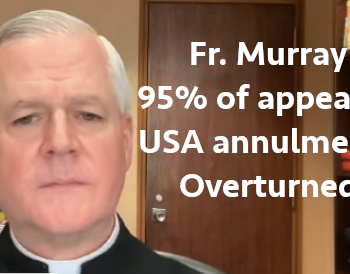
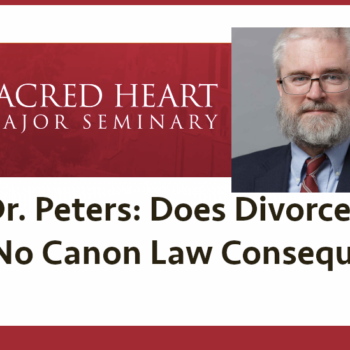
0 Comments